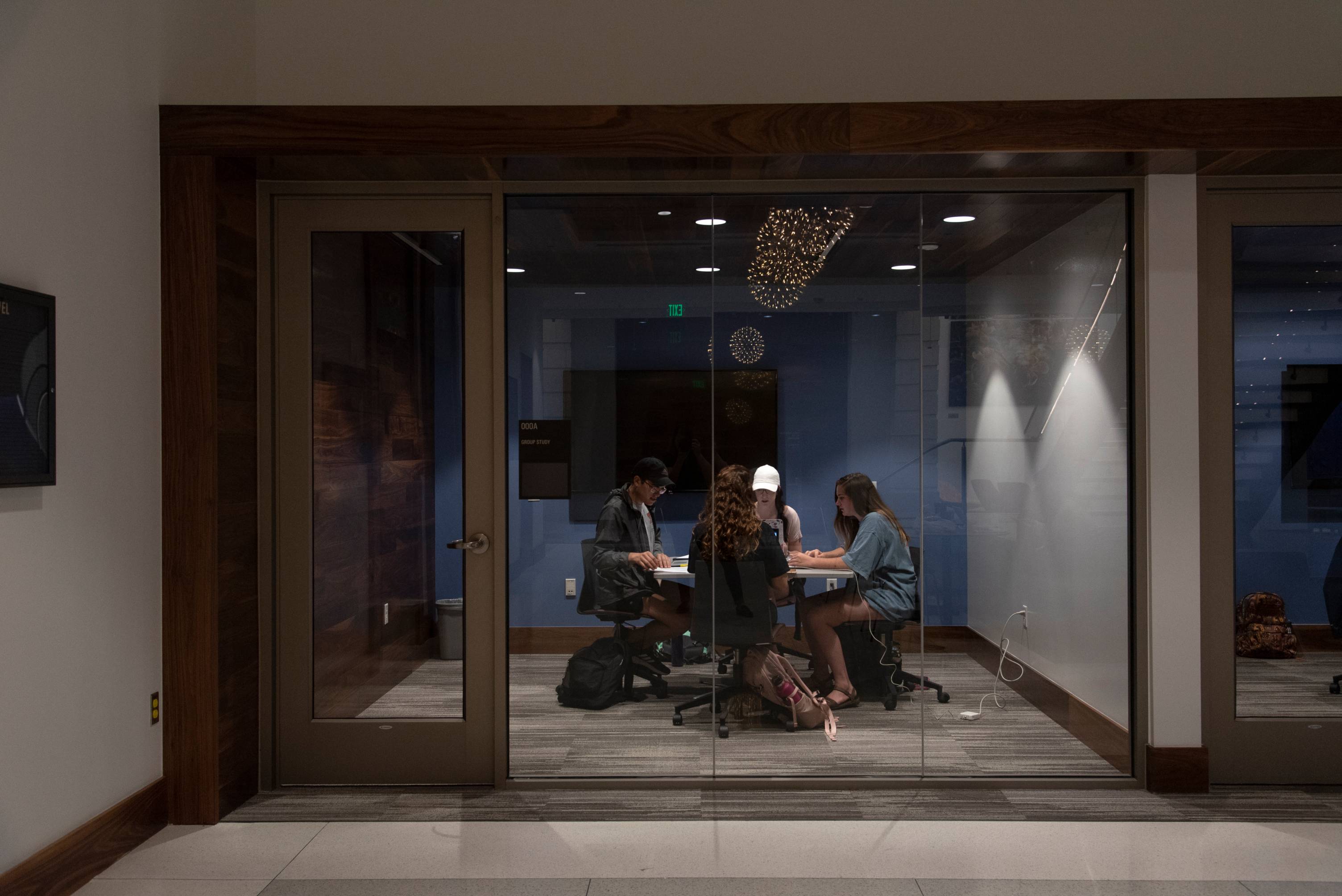Educational Programs
Navigation
-
Assessment Changes starting year 22'-23'
-
All Academic Departments
- Educational units are required to create 3 outcomes down from 5 required outcomes.
- Two fewer outcomes and four fewer methods per program
- All external accreditation guidelines must be followed
- Administrative outcomes within educational programs remain the same requirement at 2 outcomes per program.
- Educational units are required to create 3 outcomes down from 5 required outcomes.
-
Division

Who

Program coordinators/department chairs/school directors for each educational program will lead faculty discussions to gain collective input to create and assess appropriate, measurable student learning outcomes as well as administrative outcomes for each program.
Educational programs for the purpose of outcomes assessment are defined by the first four digits of the CIP code, at each level in each department/school. Stand-alone certificate programs are also expected to identify and measure outcomes.
When

The deadline for the submission of revised student learning and administrative outcomes and measures for all undergraduate and graduate educational programs for each academic year is September 30th. Near the close of the academic year, a brief analysis and evaluation pertaining to each measure, an action plan for improvement for each outcome, and evidence of realized improvement are submitted by May 31st. Following the assessment, outcomes and measures will be revised and submitted for the subsequent year.
What

Educational program outcomes focus on student learning yet also include administrative outcomes. Student learning outcomes identify the knowledge, skills, and attitudes that students are expected to acquire through their course of study in a particular program. They answer the following question: What should graduates of a particular program be expected to know, do, and value upon completion of the program? Educational program outcomes assessment is not intended to be used in evaluating faculty or staff performance. To develop a system for assessment of student learning and administrative outcomes, programs should review previous audits and proceed through the following steps.
Deadlines
- September 30
- EDUCATIONAL PROGRAM STUDENT LEARNING AND ADMINISTRATIVE OUTCOMES AND METHODS OF ASSESSMENT REVISIONS REVIEWED BY CHAIRS/DIRECTORS
- October 15
- EDUCATIONAL PROGRAM STUDENT LEARNING AND ADMINISTRATIVE OUTCOMES AND METHODS OF ASSESSMENT AUDITED BY THE COUNCIL OF ASSOCIATE DEANS FOR ACADEMIC ASSESSMENT
- October 31
- EDUCATIONAL PROGRAM STUDENT LEARNING AND ADMINISTRATIVE OUTCOMES AND METHODS OF ASSESSMENT REVISIONS REVIEWED BY DEANS
- May 31
- EDUCATIONAL PROGRAM STUDENT LEARNING AND ADMINISTRATIVE OUTCOMES RESULTS, ACTION PLANS, AND EVIDENCE OF IMPROVEMENT REVIEWED AND APPROVED BY CHAIRS/DIRECTORS
- June 15
- EDUCATIONAL PROGRAM STUDENT LEARNING AND ADMINISTRATIVE OUTCOMES RESULTS, ACTION PLANS, AND EVIDENCE OF IMPROVEMENT AUDITED BY THE COUNCIL OF ASSOCIATE DEANS FOR ACADEMIC ASSESSMENT
- June 30
- EDUCATIONAL PROGRAM STUDENT LEARNING AND ADMINISTRATIVE OUTCOMES RESULTS, ACTION PLANS, AND EVIDENCE OF IMPROVEMENT REVIEWED AND APPROVED BY DEANS
All educational programs have the opportunity to modify their mission, outcomes, and methods of assessment. As the assessment of learning outcomes begins, the Associate Vice President for Institutional Effectiveness assists in creating plans for program improvement. Chairs/Directors review and approve minor modifications to the outcomes and methods.
Following the chair/director approval of educational program student learning and administrative outcomes and methods of assessment, the Council of Associate Deans for Academic Assessment conducts an audit of the revisions.
Following the associate dean audit and chair/director approval of student learning and administrative outcomes and assessment methods, the deans review and approve outcomes and methods to improve programs. Following outcomes approval, the Associate Vice President for Institutional Effectiveness assists departments and schools in developing and implementing assessment methods.
Results from the previous outcomes assessment cycles provide baseline information for assessing improvements of educational programs. Chairs/Directors review and approve outcomes progress, establish a plan of action, and provide evidence of program improvement.
Following the chair/director approval of educational program student learning and administrative assessment results, action plans, and evidence of improvement, the Council of Associate Deans for Academic Assessment conducts an audit of the report.
Following the associate dean audit and chair/director approval of student learning and administrative assessment results, action plans, and evidence of improvement, deans review and approve outcomes and methods to improve programs.
Assessment Process
Step 1

1. Discuss the mission and overall intent of the educational program. Is the mission clearly yet briefly defined? Is the mission distinctive? Is the mission appropriate for the level of the program? Does it reflect the core purpose, primary functions, and activities of the program? Is the mission-specific to the program? Is it consistent with the mission of the University, College, and Department/School?
Step 2
For undergraduate programs, identify a minimum of five measurable student learning outcomes and two additional administrative outcomes that are consistent with the mission and overall goals of the program. For graduate programs, identify a minimum of three measurable student learning outcomes and an additional two administrative outcomes that are consistent with the mission and overall goals of the program. For certificate programs, identify a minimum of three measurable student learning outcomes that are consistent with the mission and overall goals of the program. Ideally, the student learning outcomes would reflect higher levels of the cognitive, psychomotor, and affective learning domains. Results for administrative outcomes can be derived from internal sources, external reports, or from university data.
Questions To Ask When Creating Outcomes
Are the outcomes consistent with the mission? Do the outcomes reflect the level of the program? Do the outcomes describe the knowledge, abilities, and attitudes of a successful graduate? Do outcomes represent higher levels of learning domains? Do outcomes focus on issues pertinent and important to the program? Do outcomes reflect learning through the program curriculum? Do outcomes focus on student learning rather than instructional or administrative processes? Are outcomes stated in clear and precise language? Do outcomes focus on key areas where outcomes assessment will enable the program to improve? Administrative outcomes should address important issues in the program. For example - Are students being retained? Are students graduating? How long does it take students to graduate? Do the students reflect on the composition of the state? Is enrollment increasing?
Step 3
For each outcome, identify two methods of measurement that will be used to determine progress on the outcome; direct methods are preferred. Multiple methods of measurement are necessary to assure reliability and validity. Do the measures effectively and accurately reflect learning addressed in the outcome? Can and will the method be applied to multiple sections of the same course? Do the methods of measurement include a direct means of assessment? Is it possible to collect accurate, valid, and reliable data for each measure in a reasonably efficient manner within the academic year? Do the measures provide detail on who will be assessed, how the assessment will be conducted, when and where the assessment will take place, and what specific knowledge, skills, values, and/or attitudes will be assessed? Have suggestions provided through previous audits been addressed?
Step 4

For each method of measurement, determine the acceptable level or standard of performance. What level of achievement is considered acceptable performance for graduates of the program? Are the acceptable levels consistent with any external review standards? Are acceptable levels clearly and accurately defined?
Step 5
Develop a system for implementation and assessment. How and where are concepts, skills, and values being taught? Are some adjustments necessary? How will individual student learning be measured? What measures and scoring rubrics will be needed to quantify student learning? Who will be involved in the measurement process? When will learning be measured? How will the measures be evaluated? Are measures consistent with the methods? Is data for the administrative measures available?
Step 6
Collect and analyze the assessment data. Do results reflect on and discuss the findings amassed from the corresponding measure? Are the results based on reliable and valid data? Does the data reflect learning related to the outcome in all sections of the course offered throughout the year? Do results focus on student accomplishments and success? Do results indicate improvement from previous years? Do results illustrate the effectiveness of previous action plans? Do results indicate success in achieving the desired performance target? What indicators for improvement can be gleaned from the results? Have suggestions provided through previous audits been addressed?
Step 7
Based on assessment findings, develop an action plan. Are action plans likely to lead to continuous improvement? Do action plans focus on means to improve student learning and administrative effectiveness? Are action plans feasible considering available resources and time?
Step 8
Describe the evidence of improvement gained from actions taken based on previous outcomes assessments. Does evidence of improvement focus on improvements in student learning and administrative actions? Is evidence of improvement found in the results?
Liaisons
The following representatives serve as liaisons and support for the student outcomes: educational programs assessment process. The liaisons audit the educational program outcomes assessment reports after completion of the outcomes phase and results phase. Feedback provided by the liaisons should be used to improve the outcomes assessment process. The liaisons also serve as a conduit to and from the Associate Vice President for Institutional Effectiveness.
College of Applied Arts
College of Education
College of Fine Arts and Communication
College of Health Professions
College Liberal Arts
College of Science and Engineering
